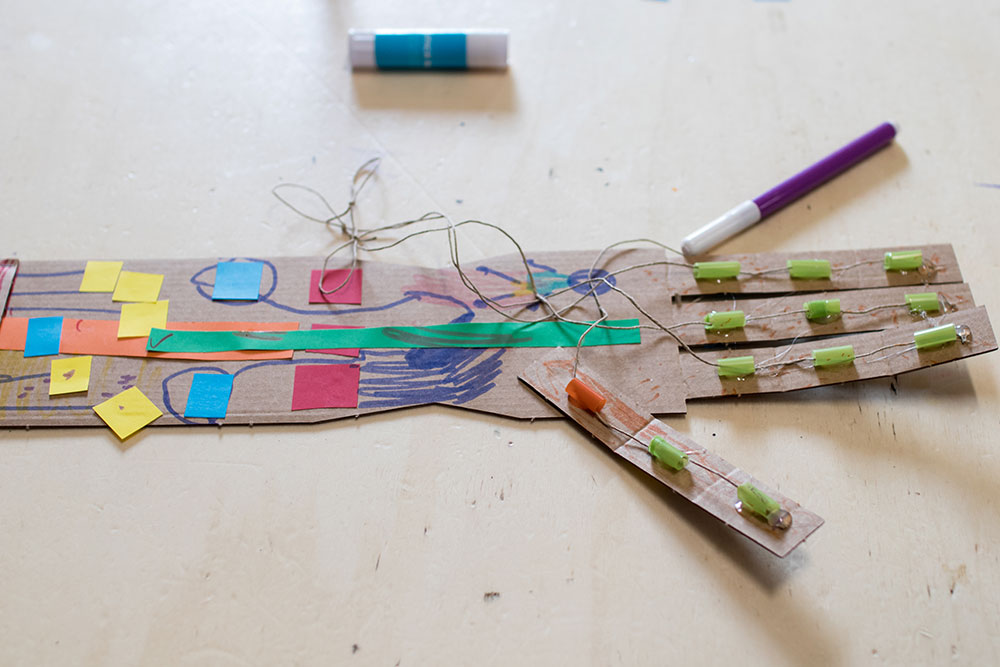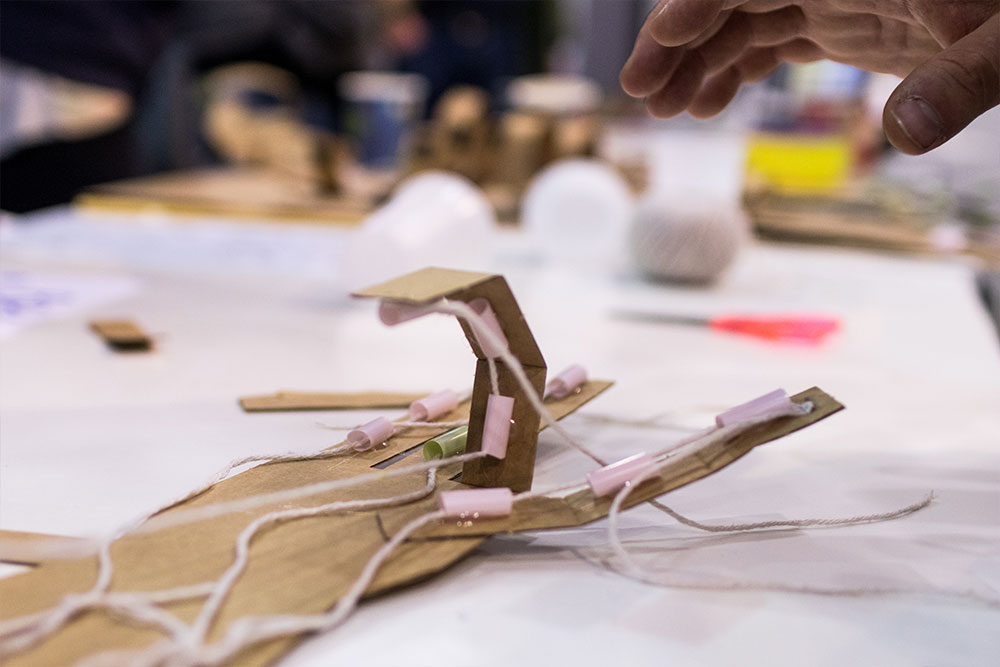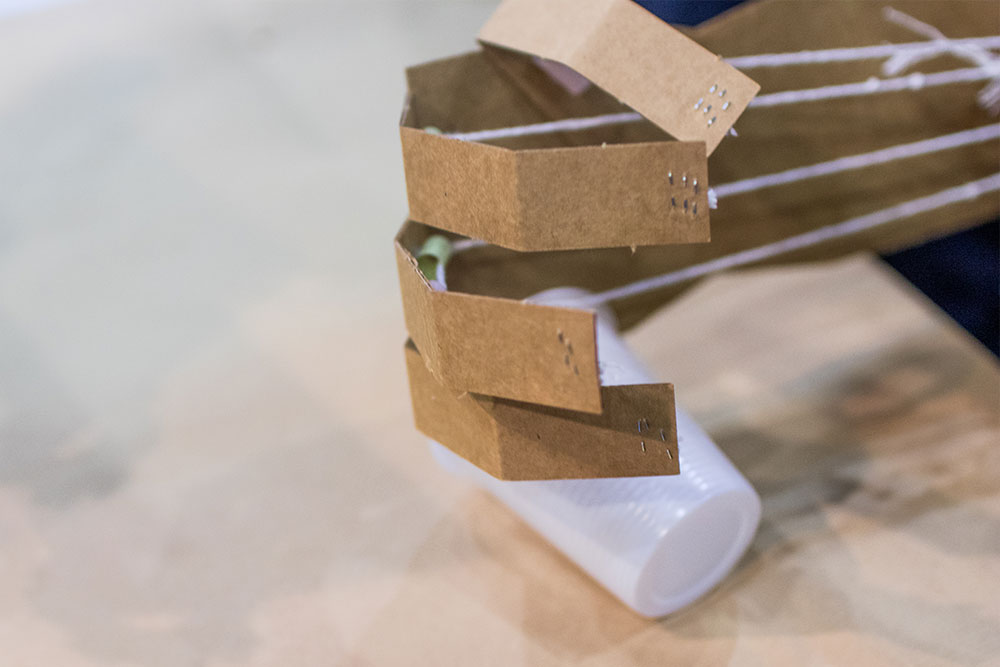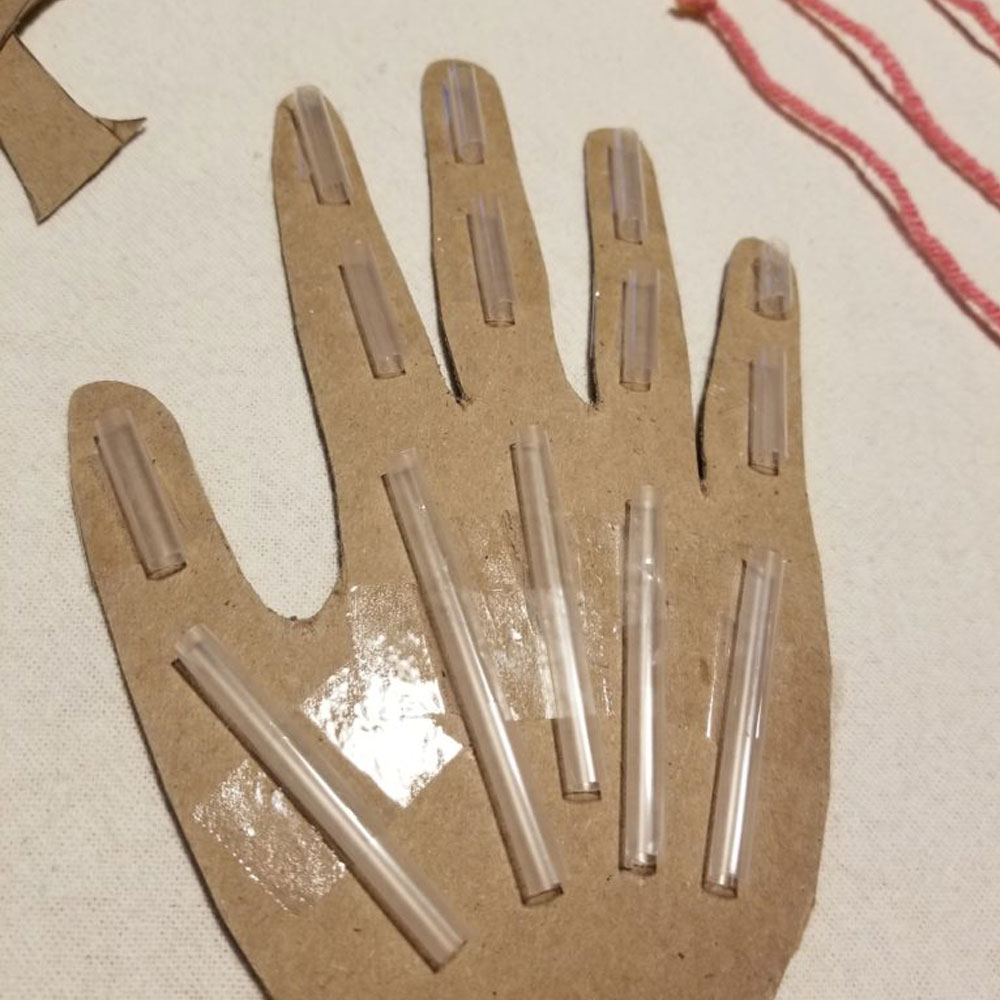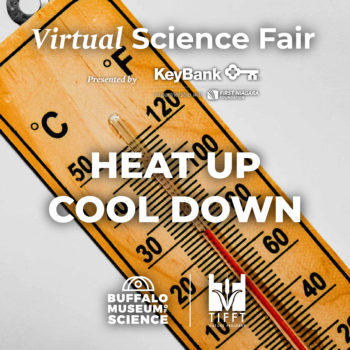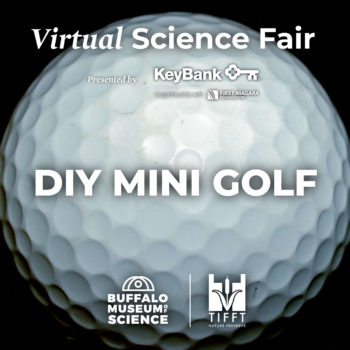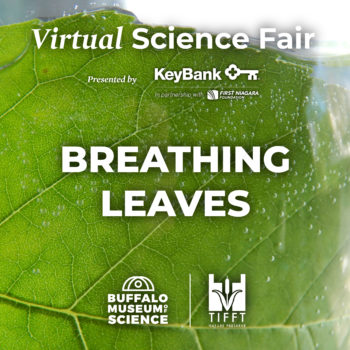DIY Robot Hand
Have science fun as a family! Complete activities with parental supervision.
Materials:
- Thick paper or thin cardboard (cereal, cracker or tissue boxes work well)
- Yarn or thick string
- 5 large beads (ex: plastic pony beads)
- 2 straws
- Scissors
- Tape
- Pencil
Procedure
1. Trace a hand onto cardboard and cut it out.
2. Cut straws into 1-inch pieces (or 1/2 inch if you have a small hand!).
3. Using the tape, attach the straw pieces to the hand (see top image).
4. Crease the cardboard in between the straws – these will simulate your joints (see red lines on top image).
5. Cut five 12-inch pieces of yarn and tie a bead to the end of each.
6. Thread each piece of yarn through the straw pieces, starting with the fingertips and ending at the palm of your hand. Each finger should be controlled by one string.
7. Use the strings together or independently to control the movement of each of the fingers. Congrats on your new robot hand!
8. Be sure to take a picture to share in the Facebook comments on the Buffalo Museum of Science or Tifft Nature Preserve pages!
What’s it all about?
What makes us move? How do we skip, swim, shrug, scoot, or stretch? There are a lot of different actions at work inside of our bodies all the time.
Did you know that not all of those movements are driven only by muscles? Our fingers are extraordinary in that they don’t have any muscles in them! They rely on a series of fine, tough fibers called tendons that link the bones of our fingers to the muscles in our arms.
The pull of the strings on your Robot Hand acts like the tendons in our hand that pull our bones as a result of the arm muscles being flexed. When we let go of the string the fingers go flat again, as if the tendon was releasing.
Try It!
Can you see the tendons in your hands? Try making your hand look like the photo to the right. Are those bones or tendons you can see? How do you know?
Grab your right forearm with your left hand. Make a fist, stretch your hand flat, wiggle your fingers- what do you feel? Why?
Where else might you have tendons? Do all tendons do the same thing?
